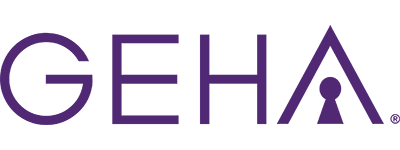If you have a dog or cat, you’ve most likely brought them to the vet before. Like physicians, veterinarians have access to a wide range of medications to keep pets safe, healthy, and comfortable during procedures. Naturally, you wouldn’t just reach over and take one of these medications for yourself, as most aren’t approved for human use. But this is exactly what’s happening when people ingest xylazine. They end up taking a medication that is safe for animals but not for humans.
Xylazine is a medication used by veterinarians to calm, sedate, and provide pain relief to animals. It can only be obtained by a veterinarian or by prescription from a veterinarian. But, like other substances, human exposure is possible. This scenario is most common among people who use heroin, fentanyl, or cocaine, as xylazine is often used as an adulterant in these substances.
In 2021, there were 3,468 xylazine-involved overdose deaths in the U.S., and nearly all of them involved fentanyl. Knowing how to make a positive xylazine identification can help save lives and protect vulnerable individuals from overdose. As a trusted recovery center in Prescott, AZ, Wolf Creek Recovery is on a mission to educate readers on the dangers of xylazine. While there is still much to learn about this substance and its impact on humans, there is a lot we do know. Let’s explore.
Xylazine Identification
Xylazine helps calm and sedate animals. It is not approved for human use. Why? When studied in humans, the clinical trials were terminated due to severe hypotension and central nervous system depressant effects. Unfortunately, this substance has made its way into our nation’s drug supply, primarily in illicit opioids like fentanyl. The combination of the two puts people at a significant risk of overdose, which is why identifying the substance is crucial.
What Does Xylazine Look Like?
In its pure, laboratory-grade form, xylazine is typically a white or off-white crystalline powder. It has a fine and powdery texture, though it can form small crystals depending on moisture and storage conditions. Commercial veterinary formulations are often clear, colorless, or slightly tinted liquids supplied in sterile vials. These solutions come in various concentrations, with labeling and packaging indicating its usage.
Xylazine can also be used as an adulterant in illicit opioids like fentanyl or heroin. In this illicit adulterated form, the powder usually looks similar to other street-drug formulations—off-white, brown, or beige in color, depending on the presence of cutting agents, dyes, binders, and impurities. It is difficult, if not impossible, to detect xylazine in a product. Only laboratory testing can confirm its presence.
Does Xylazine Have a Specific Odor?
Xylazine has a mild or non-distinct odor in its pure form. Some sources say that it has a faint chemical or pungent smell, but there is no characteristic odor associated with the powder. The same is true in its injectable form.
The prepared solutions for veterinary medicine are generally odorless and have a mild, nonspecific smell. This could come from the solvent or preservatives rather than the xylazine itself. Illicit xylazine, too, lacks a specific odor, and even if there were one, it would likely be masked by other chemicals or cutting agents. Bottom line: You cannot rely on the smell of xylazine to identify the substance.
What Does Xylazine Taste Like?
Like many pharmaceutical compounds, xylazine in its pure form is typically reported to have a bitter, chemical, or medicinal-like taste. However, it does not have a strong, unique flavor that would easily distinguish it from other substances.
When xylazine is mixed with other illicit substances, the mild taste it could have is likely to be diluted or hidden by other compounds. Therefore, even if a substance tastes bitter or medicinal, this in no way confirms the presence of xylazine. Again, laboratory testing is the only accurate way to make a positive xylazine identification.
Different Types of Xylazine
Xylazine itself is one active compound (an a2-adrenergic agonist), but there are different ways it’s prepared and sold. The chemical forms of xylazine consist of xylazine base, which is a white crystalline powder, and xylazine hydrochloride (HCI) salt, which improves solubility in water-based solutions. You are unlikely to come across these in everyday settings—they are more common in research or chemical supply contexts.
While the active ingredient—xylazine—remains the same, manufacturers market it under different names and in various concentrations. Common examples include Rompun (by Bayer) and Anased. These medications come in injectable solutions, intended primarily for sedation in large animals. However, because concentrations can vary, it’s still important to confirm the dose on the label.
Xylazine can also be diverted for non-veterinary use or used as an adulterant in illicit substances, appearing as a white or off-white powder. There are no legitimate types of xylazine in this context.
Official Brand Names of Xylazine
While the availability and branding of xylazine can vary by country and manufacturer, the most common brand names include:
- Rompun
- Anased
- Sedazine
- Chanazine
- XylaMed
- Xyla-Ject
- Xylapan
- Xylasol
Regardless of the brand, these formulations all contain xylazine as the active ingredient and are available in various concentrations, such as 20 mg/mL or 100mg/mL.
Street Names for Xylazine
By itself, xylazine may be referred to as “tranq.” When it’s combined with opioids like fentanyl, it may be called “tranq dope.” The combination of these two substances places individuals at a higher risk of experiencing fatal poisoning.
You may have also heard the term “zombie drug” or “zombie dope” being used to talk about xylazine. However, this term is directed at people who use the substance, adding to the stigma. Other street names you might hear being used are fetty sleepers (when mixed into fentanyl) or sleep-cut (to emphasize the sedative effects).
What Are the Best Ways to Avoid Xylazine?
The best way to avoid xylazine is to abstain from illicit substance use. However, people who use these substances deserve to be safe, too, and it’s important that they know how to reduce their risk as well.
As we learned above, xylazine is nearly impossible to detect in substances based on smell, taste, or texture. This is why you should always test your substances whenever possible. Many areas have drug-checking services or drop-off or mail-in testing programs. You can also purchase xylazine test strips to detect the presence of xylazine. However, these strips only tell you if the substance is contaminated; it does not tell you how much xylazine is present.
Additionally, illicit substances should never be used alone. If possible, they should be used in the presence of someone who can help. When xylazine is combined with opioids, it greatly increases the risk of overdose because it induces sedation and respiratory depression. If an overdose is suspected, you should call 911 and administer naloxone. Even though naloxone doesn’t reverse xylazine, it does work effectively against opioids.
Recover From Xylazine Use Disorder in Prescott, AZ
Xylazine treatment is still emerging due to the substance’s recent appearance in illicit opioids. Treatment follows a comprehensive approach that includes medical care, behavioral therapy, and support services. If you’re dependent on the substance, supervised detox is recommended due to the sedative properties and frequent co-use with opioids. Withdrawal symptoms may include anxiety, restlessness, elevated blood pressure or heart rate, tremors, irritability, and insomnia. Also, because xylazine is strongly associated with necrotic skin ulcers, you may require wound care management.
Once the physical aspects of xylazine are addressed, you can step into a xylazine addiction rehab program that offers medication-assisted treatment (MAT), cognitive behavioral therapy (CBT), individual and group therapy, psychoeducation, and trauma-informed care. Peer support and recovery services can also be helpful in supporting recovery. People who are dependent on xylazine often require ongoing medical support for skin, mental health, and substance use issues. Keep in mind that many people who use xylazine are also dependent on fentanyl, making comprehensive support a necessity.
Wolf Creek Recovery offers hope for individuals facing substance use disorders. From the moment you step into our recovery facility, you will be greeted with respect, understanding, and support. We are here to help you recover from substance use, improve your mental health and well-being, and build a new, fulfilling life. Aside from therapy, counseling, and psychoeducation, we also assist our clients in finding new activities that they love through our outdoor therapy program. To start your journey to recovery, contact Wolf Creek Recovery at 833-732-8202. Build a life you love.
FAQs About the Identification of Xylazine
What does xylazine look like?
In its pure form, xylazine is a crystallized powder that is white or off-white in color, depending on the manufacturing process. In veterinary formulations, xylazine is a clear liquid that can be injected into large animals. And, in street drug formulations, xylazine is a powder that ranges from white to off-white to brown.
Does xylazine have an odor to it?
Xylazine has no distinct smell, making it nearly impossible to detect the presence of this substance in illicit opioids. Some say that the xylazine smells pungent or bitter, but this could come from the other compounds being used.
Can you taste xylazine?
Xylazine, in its pure form, is said to have a bitter or medicinal taste. However, this taste is not characteristic of the substance and is likely to be covered up by other compounds used in illicit opioids.
Is there a way to detect xylazine in a substance?
The only accurate way to test for xylazine is by using a test strip. These strips can detect contamination, but they cannot tell you how much xylazine is in the substance.











